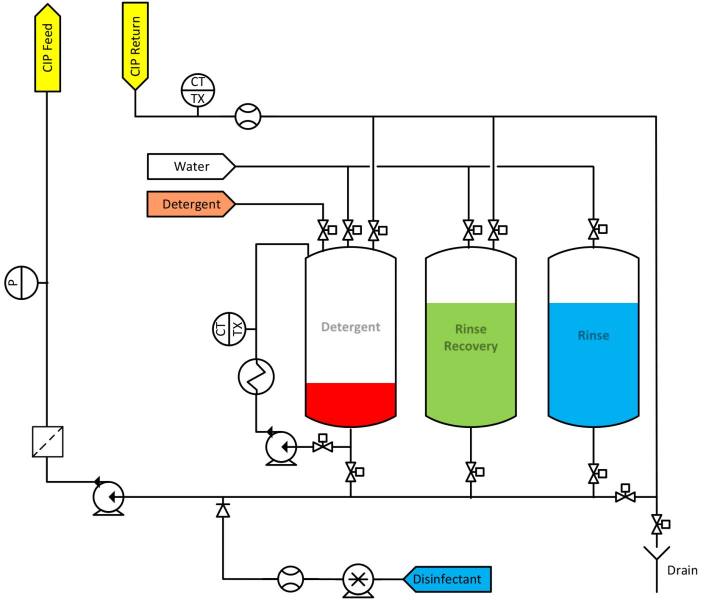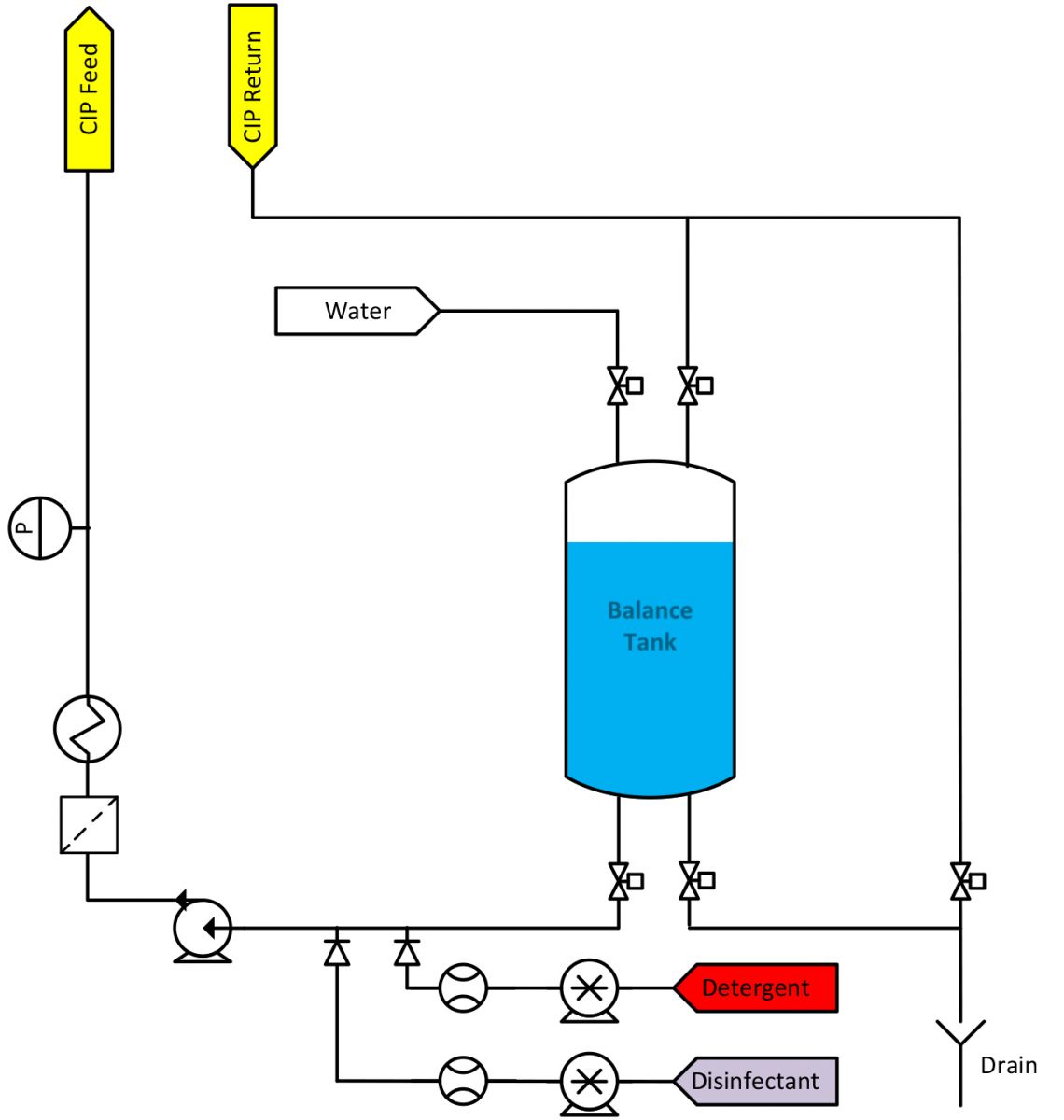The cleaning of complete items of plant or pipeline without dismantling or opening of the equipment, and with little or no manual involvement on the part of the operator.
A good definition of Cleaning in Place (CIP) is given in the 1990 edition of the Society of Dairy Technology manual.
"The cleaning of complete items of plant or pipeline without dismantling or opening of the equipment, and with little or no manual involvement on the part of the operator. The process involves jetting or spraying of surfaces or circulation of cleaning solutions through the plant under conditions of increased turbulence and flow velocity."
Making sure that a processing plant operates efficiently requires the maximum utilisation of the plant at the lowest cost. Kersia's years of experience in CIP help us to deliver real benefits and savings for our customers through management systems, training and optimisation plans, which provide a methodology for the business to achieve the best cost of clean possible whilst minimising plant down time.
Plant and equipment is cleaned to ensure we maintain product quality and process efficiency. Cleaning closed plant in place (CIP), if specified and managed correctly, gives certain benefits over manual cleaning; namely:
Which can lead to:
To successfully clean in place:
The principles of cleaning are always the same; whether it is manual cleaning of a utensil in a sink, or in a dishwasher or the CIP of a vessel. Energy in the form of chemical energy, thermal energy and physical energy are all required to remove the soil from the surface. As with all cleaning there needs to be a balance of energies to effectively clean a surface. For instance, if the physical energy input is reduced then this must be made up by either an increase in chemical or thermal energy or an increase in the time of contact with the cleaning solution.
With CIP the physical energy comes from the movement or impact of the fluid. In the case of pipework, the turbulence of the fluid flowing creates a physical shearing action on the internal wall of the pipe. With vessel cleaning the physical energy comes from the impact or flow of the cleaning fluid over the internal vessel surface.
The typical cleaning sequence for closed plant (i.e. CIP) is the same as used for open plant cleaning.
A CIP cleaning sequence (cycle) involves the following steps. The variables (parameters) of the clean will depend on many factors including the process plant, the soil, the materials of construction and water hardness:
The schematic, shown below, of a recovery CIP Set shows two large recovery tanks; one is used to hold the detergent the other recovered final rinse water. There is also a clean water holding tank.

Recovery CIP Set - typical cleaning cycle
Prerinse Feed water to vessel from rinse recovery tank for 5 mins.
Return to drain.
Detergent Feed detergent to vessel from detergent tank.
Return to detergent tank.
Allow to recirculate for 20 mins.
Recover detergent to detergent tank
Rinse Feed clean water to vessel for 5 mins.
Return to rinse recovery tank.
Disinfect Feed clean water to vessel
Return to rinse recovery tank
While feeding water run disinfectant dosing pump for given volume.
Allow to recirculate for 5 mins.
The schematic, shown below, of a single use CIP Set shows the balance (buffer) tank, typically of the order of 200 litres and associated pumps, valves and pipework.

Single Use CIP Set - typical cleaning cycle
Prerinse Feed clean water to vessel for 5 mins.
Return to drain.
Detergent Feed clean water to vessel
Return to balance tank.
When circuit made run caustic dosing pump for given volume.
Plate heat exchanger or direct steam injection used to heat solution.
Allow to recirculate for 20 mins.
Drain down vessel and balance tank.
Rinse Feed clean water to vessel for 5 mins.
Return to drain.
Disinfect Feed clean water to vessel
Return to balance tank.
When circuit made run disinfectant dosing pump for given volume.
Allow to recirculate for 5 mins.
Drain Drain system and balance tank.
Ensuring safe and sustainable connections across the food chain with expert hygiene solutions.